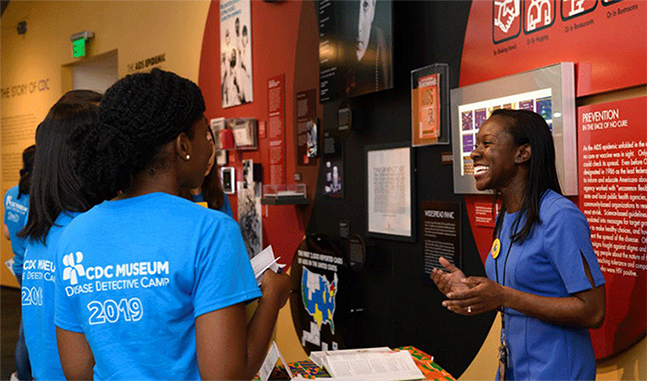Concussion
Concussion is a light traumatic mind damage manifesting with self-limited signs on the much less extreme finish of the mind damage spectrum.
The Fifth Worldwide Convention on Concussion in Sport (2016) defines sports-related concussion as a traumatic mind damage induced by biomechanical forces precipitated both by a direct blow to the top, face, neck or elsewhere on the physique with an impulsive power transmitted to the top. (Nevertheless, this definition can also be relevant to concussion usually.)
This damage ends in the speedy onset of short-lived, spontaneously resolving neurological impairment. In some instances, indicators and signs evolve over numerous minutes to hours.
Though neuropathological modifications could consequence, the acute scientific indicators and signs largely replicate a useful disturbance relatively than mind structural damage, and subsequently no abnormality is seen on customary structural neuroimaging research.
A variety of scientific indicators and signs could develop that will or could not contain lack of consciousness.
Decision of the scientific and cognitive options usually follows a sequential course, however in some instances signs could also be extended.
The scientific indicators and signs can’t be defined by drug, alcohol or remedy use, different accidents (resembling cervical accidents, peripheral vestibular dysfunction, and so forth.), or different comorbidities (e.g., psychological elements or coexisting medical circumstances).
Synonym
- Gentle traumatic mind damage (mTBI)
Epidemiology & Demographics
Incidence
3.8 million sports- and recreation-related concussions happen every yr within the U.S. It’s estimated that as many as 50% of concussions go unreported.
Prevalence
Every yr, U.S. emergency departments deal with an estimated 135,000 sports- and recreation-related TBIs, together with concussions, amongst kids ages 5 to 18.
Predominant Gender and Age
- •Kids and teenagers usually tend to get a concussion and take longer to get well than adults.
- •Restricted research have proven that in sports activities which can be performed by each women and men, girls are at extra threat of sustaining a concussion. In males the incidence is highest in soccer, adopted by hockey, and in females, soccer. Participant contact is the commonest trigger.
What will increase the danger of Concussion?
- •Collaborating in high-impact sports activities and leisure actions
- •Earlier historical past of concussion
- •Athletes with a physique mass index (BMI) >27 kg/m2 and people who practice <3 hr/wk
- •People who maintain a sports-related concussion and proceed enjoying instantly after the damage require almost twice as a lot time to get well as those that are eliminated instantly
Bodily Findings & Medical Presentation
What are the Signs and Indicators of Concussion
From Patel DR et al: Sports activities concussions in adolescents, Pediatr Clin N Am 57:652, 2010.
| Psychological Standing Adjustments |
| Amnesia |
| Confusion |
| Disorientation |
| Simply distracted |
| Extreme drowsiness |
| Feeling dinged, shocked, or foggy |
| Impaired stage of consciousness |
| Inappropriate play behaviors |
| Poor focus and a focus |
| Seeing stars or flashing lights |
| Gradual to reply questions or to comply with instructions |
| Bodily or Somatic |
| Ataxia or lack of steadiness |
| Blurry imaginative and prescient |
| Decreased efficiency or enjoying capacity |
| Dizziness |
| Double imaginative and prescient |
| Fatigue |
| Headache |
| Mild-headedness |
| Nausea, vomiting |
| Poor coordination |
| Ringing within the ears |
| Seizures |
| Slurred, incoherent speech |
| Vacant stare/glassy-eyed |
| Vertigo |
| Conduct or Psychosomatic |
| Emotional lability |
| Irritability |
| Low frustration tolerance |
| Character modifications |
| Nervousness, nervousness |
| Unhappiness, depressed temper |
What causes Concussion?
- •Happens when rotational or angular acceleration forces are utilized to the mind, leading to shear pressure of the underlying neural components, together with altered autonomic perform and impaired management of cerebral blood circulation
- •Could also be related to a blow to the cranium; nevertheless, direct affect to the top isn’t required
Differential Prognosis
- •Migraine
- •Cervical pressure
- •Posttraumatic vestibular damage
How is Concussion recognized?
- •There isn’t a definitive diagnostic check for concussion. A standardized protocol may help first responders determine extra refined psychological standing modifications. Bodily examination ought to embody clean pursuits (examiner strikes finger horizontally throughout visual view), saccades, gaze instability, close to level of convergence, lodging, and steadiness. Sufferers with lack of consciousness or posttraumatic convulsive seizures ought to be transported to the emergency division.
Standardized Evaluation of Concussion
Goldman L, Shafer AI: Goldman-Cecil drugs, ed 26, Philadelphia, 2020, Elsevier.
| Job | Attainable Rating |
|---|---|
| Orientation | |
| Month, date, day of week, yr, time (1 level for every right reply) | 0-5 |
| Rapid Reminiscence | |
| Affected person repeats a 5-word listing spoken by examiner; 3 trials (1 level for every phrase appropriately remembered) | 0-15 |
| Focus | |
| Digits backward; 3-, 4-, 5-, and 6-digit strings (1 level for every digit string appropriately repeated backward) | 0-4 |
| Months of the yr in reverse order (1 level for repeating backward in right sequence) | 0-1 |
| Delayed Reminiscence Recall | |
| Affected person repeats the 5 phrases from Rapid Reminiscence check (1 level for every phrase appropriately recalled) | 0-5 |
| TOTAL SCORE | 0-30 |
- Sideline evaluation:
- 1.No athlete with a suspected concussion ought to return to play that day.
- 2.Neurologic evaluation utilizing a standardized instrument, resembling s SCAT-3 (Sports activities Concussion Evaluation Instrument), which incorporates the BESS (Steadiness ErrorScoring System), Maddocks Questions, and SAC (Standardized Evaluation of Concussion).
- 3.Monitor for deterioration; no athlete ought to be left alone.
- •Workplace evaluation:
- 1.Historical past targeted on present signs. Think about using Postconcussion Symptom Guidelines. In line with the Consensus Assertion on Concussion in Sport issued by the Fifth Worldwide Convention on Concussion in Sport, the next domains ought to be investigated when contemplating a prognosis of sports-related concussion. An issue in a single area within the correct historic context ought to elevate concern for sports-related concussion.
- a.Signs: Somatic (e.g., headache), cognitive (e.g., feeling like in a fog), and/or emotional signs (e.g., lability)
- b.Bodily indicators (e.g., lack of consciousness, amnesia, neurological deficit)
- c.Steadiness impairment (e.g., gait unsteadiness)
- d.Behavioral modifications (e.g., irritability)
- e.Cognitive impairment (e.g., slowed response instances)
- f.Sleep/wake disturbance (e.g., somnolence, drowsiness)
- 2.Neurologic examination
- a.Gait/steadiness testing. Take into account the Steadiness Error Scoring System (BESS)
- b.Cerebellar coordination: Finger-to-nose testing (examined on SCAT-3 card)
- c.Convergence of Accommodative Sufficiency
- 1.Historical past targeted on present signs. Think about using Postconcussion Symptom Guidelines. In line with the Consensus Assertion on Concussion in Sport issued by the Fifth Worldwide Convention on Concussion in Sport, the next domains ought to be investigated when contemplating a prognosis of sports-related concussion. An issue in a single area within the correct historic context ought to elevate concern for sports-related concussion.
- •Neurocognitive testing:
- 1.Pc-based packages, resembling ImPACT, ANAM, CogSport
- 2.Neuropsychiatric testing administered by a neuropsychologist
- •When utilized in mixture, symptom evaluation, steadiness evaluation, and neurocognitive testing present a sensitivity of >90% for the identification of concussion.
- •Take into account the Buffalo Concussion Treadmill Take a look at, which identifies physiologic dysfunction in concussion, guidelines out different diagnoses, and might quantify a protected stage of exercise in concussion restoration.
Imaging Research
- •CT imaging isn’t universally indicated and ought to be thought-about on a person foundation. It’s indicated in any athlete with a quickly altering or focal neurologic examination or with a suspected intracranial bleed.
- •Take into account following PECARN tips.
How is Concussion handled?
Acute Basic Remedy
- •Removing from recreation
- •Bodily relaxation
- 1.No return to play till asymptomatic for not less than 24 hours.
- 2.Observe the return-to-play tips
Graduated Return to Play Protocol
From Putukian M: The acute signs of sports-related concussion: prognosis and on-field administration, Clin Sports activities Med 30(58), 2011.
| Rehabilitation Stage | Useful Train at Every Stage of Rehabilitation | Goal of Every Stage |
|---|---|---|
| 1.No exercise | Full bodily and cognitive relaxation | Restoration |
| 2.Mild cardio train | Strolling, swimming, or stationary biking, conserving depth <70% most predicted coronary heart charge. No resistance coaching | Improve coronary heart charge |
| 3.Sport-specific train | Skating drills in ice hockey, working drills in soccer. No head affect actions | Add motion |
| 4.Noncontact coaching drills | Development to extra complicated coaching drills, e.g., passing drills in soccer and ice hockey. Could begin progressive resistance coaching | Train, coordination, and cognitive load |
| 5.Full contact observe | After medical clearance, take part in regular coaching actions | Restore confidence and assess useful abilities by teaching employees |
| 6.Return to play | Regular recreation play |
-
- There isn’t a proof to assist extended relaxation in concussed athletes longer than a number of weeks (see “ Postconcussive Syndrome ”). Extended inactivity after concussion has been linked to destructive well being impact. Mild cardio exercise that avoids threat for reinjury decreases concussion signs, suggesting that low-level bodily exercise postconcussion may be helpful.
- •Cognitive relaxation to restrict signs
- 1.Restrict display time to lower than 2 hours per day.
- 2.Tutorial lodging in school. Take into account return to high school for half-days when tolerating 2 hours of work from home.
- 3.Encourage good sleep hygiene.
Disposition
- •Physiologic restoration is slower than symptomatic restoration. Protocols involving a symptom-free ready interval earlier than return to play are warranted. The under desk summarizes the American Academy of Neurology, American Medical Society for Sports activities Medication, and Worldwide Convention on Concussion suggestions on returning to play after a concussion.
- •If concussion signs happen with exercise at one stage, the athlete ought to cease the exercise, relaxation till signs resolve, after which restart his or her development on the stage that didn’t elicit signs.
- •There are not any evidence-based tips for disqualifying or retiring an athlete from sport after a concussion. Every case ought to be individually thought-about.
Referral
Referral to sports-medicine doctor, neuropsychology, or concussion heart is indicated if there’s concern in regards to the timing of return to contact or collision sport.
Referral can also be indicated in sufferers with preexisting neurologic issues resembling migraines, despair or nervousness, and in those that have had a number of concussions.
Prevention
- •Preparticipation evaluations for all athletes.
- •Preparticipation neurocognitive and steadiness testing to ascertain a baseline.
- •There may be at the moment no proof to assist the usage of concussion prevention headbands or mouth guards.
- •Spontaneous restoration from acute concussion ranges from 1 to 2 wk in adults and as much as 4 wk in adolescents.
Affected person & Household Training
Facilities for Illness Management and Prevention: www.cdc.gov/TraumaticBrainInjury/get_the_facts.html.
Urged Readings
- Facilities for Illness Management and Prevention: Traumatic Mind Damage & Concussion. Obtainable at www.cdc.gov/TraumaticBrainInjury/get_the_facts.html.
- Elbin R.J., et al.: Removing from play after concussion and restoration time. Pediatrics 2016; 138(3): e20160910.
- Grool A.M., et al.: Affiliation between early participation in bodily exercise following acute concussion and protracted post-concussive signs in kids and adolescents. JAMA 2015; 316: pp. 2504.
- Halstead M.E., et al.: Sports activities-related concussion in kids and adolescents. Pediatrics 2010; 126 (3): pp. 597-615.
- Harmon Okay.G.: American Medical Society for Sports activities Medication place assertion: concussion in sport. Clin J Sport Med 2013; 23 (1-18):
- Leddy J.J., et al.: Use of graded train testing in concussion and return-to-activity administration. Curr Sports activities Med Rep 2013; 12 (6): pp. 370-376.
- Grasp C.L., et al.: Within the clinic: concussion. Ann Intern Med 2014; 160 (3):
- McCrory P., et al.: Consensus assertion on concussion in sport: the 4th Worldwide Convention on Concussion in Sport held in Zurich, November 2012. Br J Sports activities Med 2013; 47: pp. 250-258.
- McCrory P., et al.: Consensus assertion on concussion in sport: the fifth Worldwide Convention on Concussion in Sport held in Berlin, October 2016. Br J Sports activities Med 2018; 51: pp. 838-847.
- Mullally W.J.: Concussion. Am J Med 2017; 130: pp. 885-892.
- Patel D.R., et al.: Sports activities associated concussions in adolescents. Pediatr Clin North Am 2010; 57: pp. 649-670.
- Putukian M.: The acute signs of sports-related concussion: prognosis and on-field administration. Clin Sports activities Med 2011; 30: pp. 49-61.













